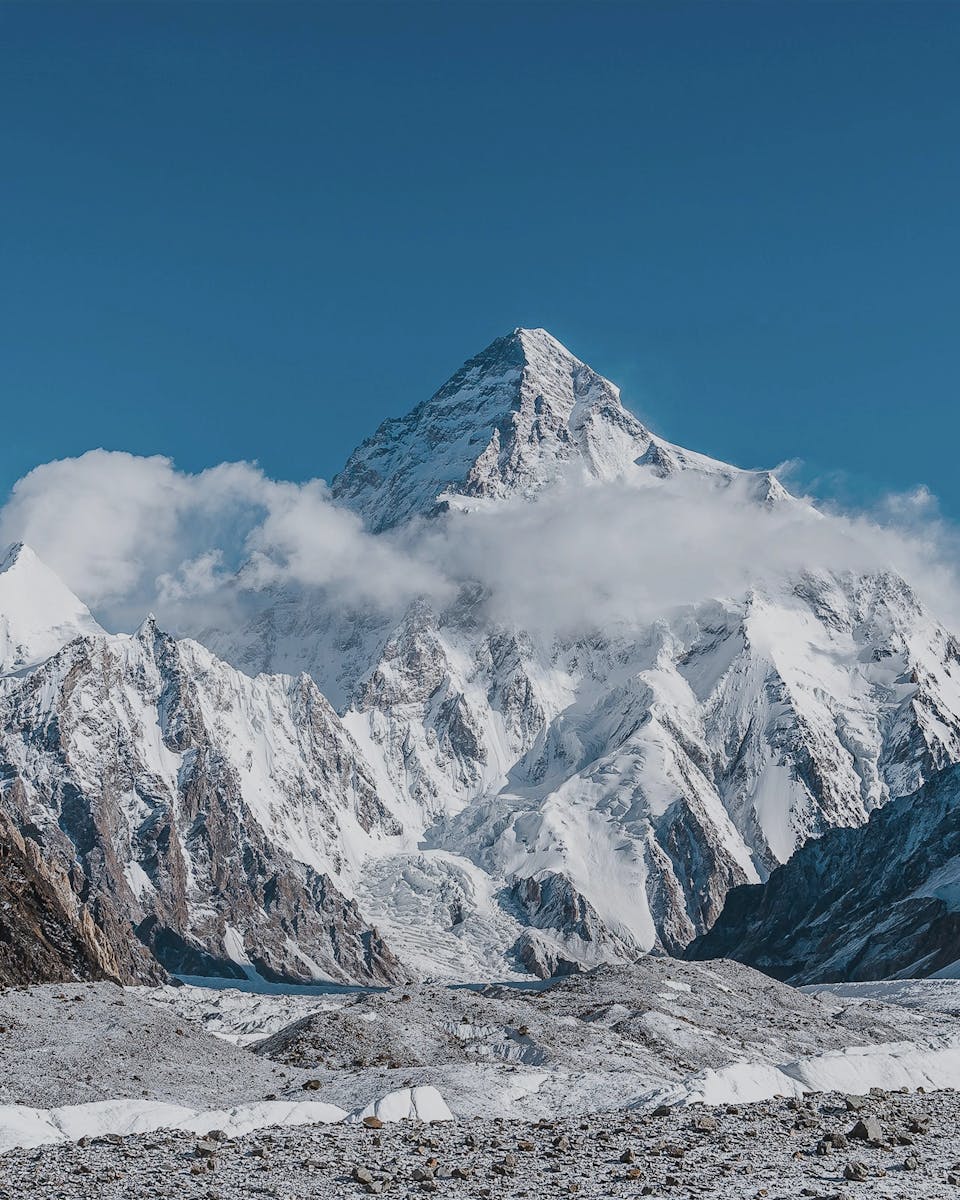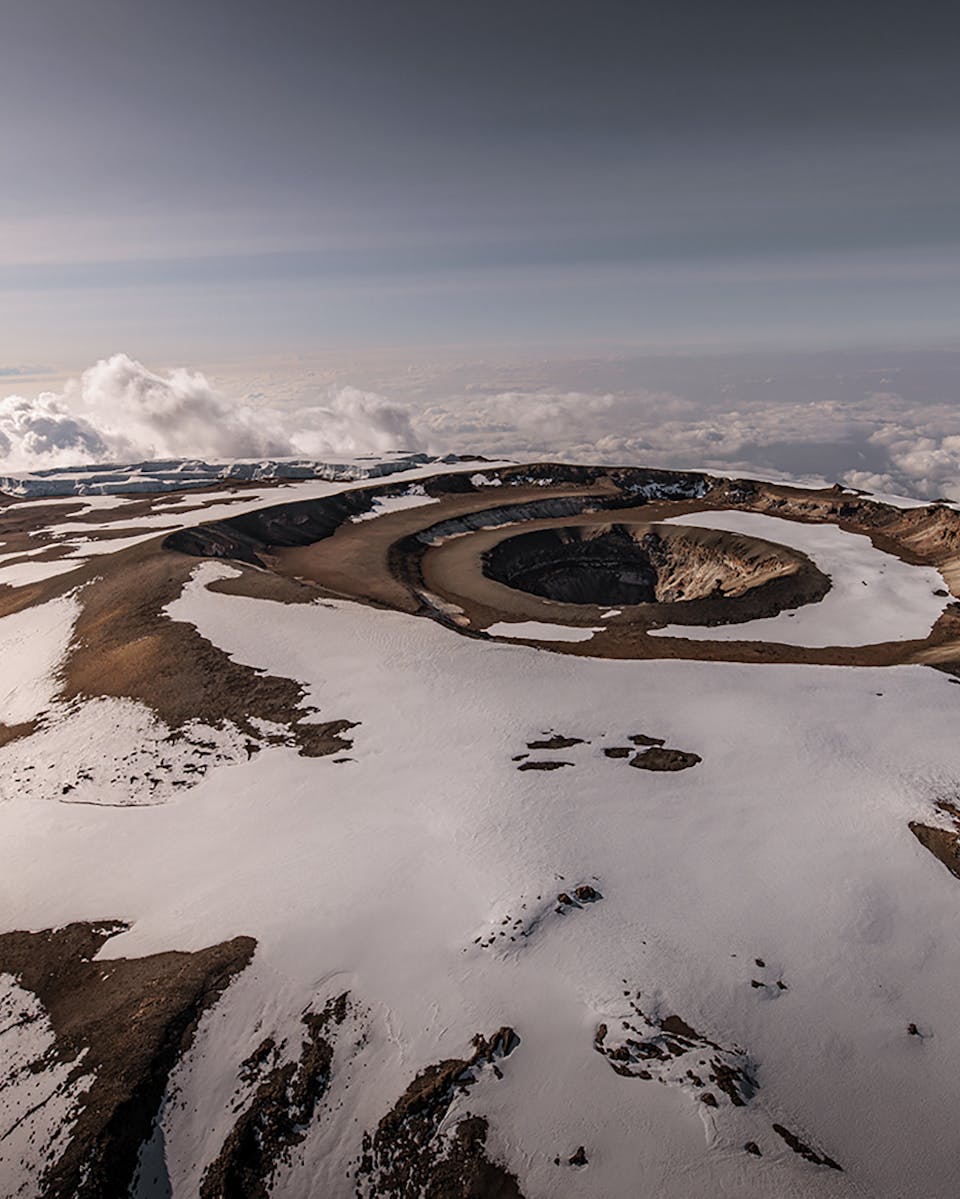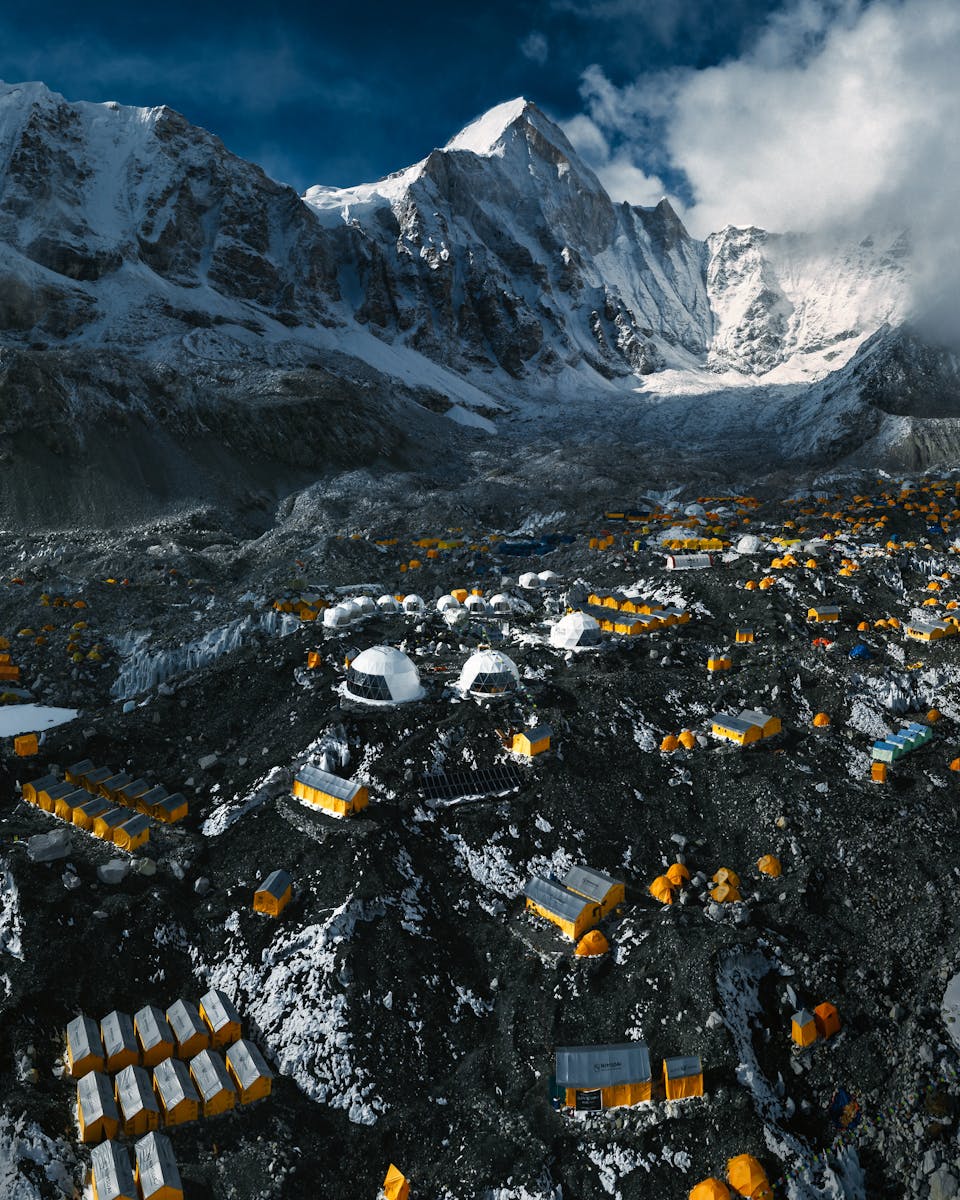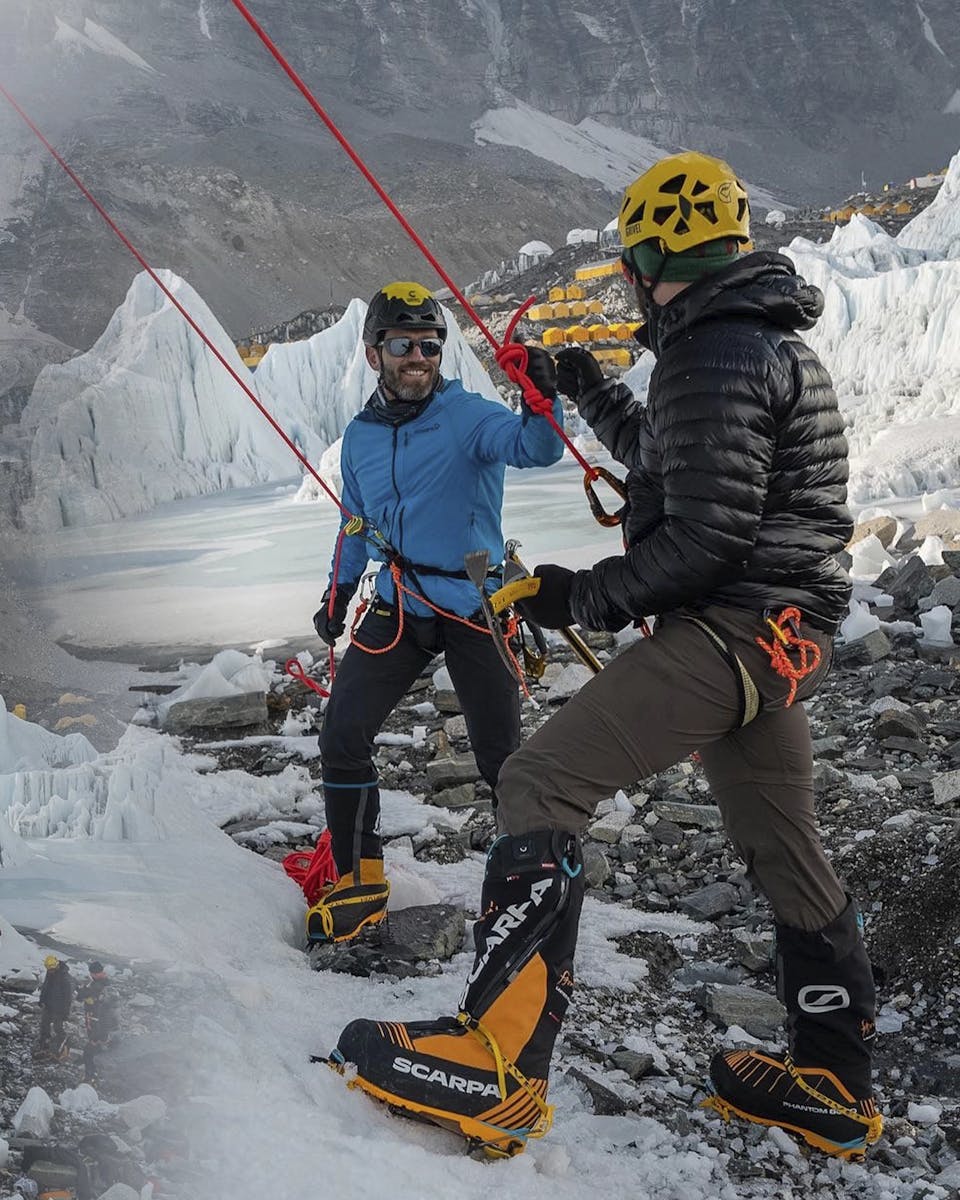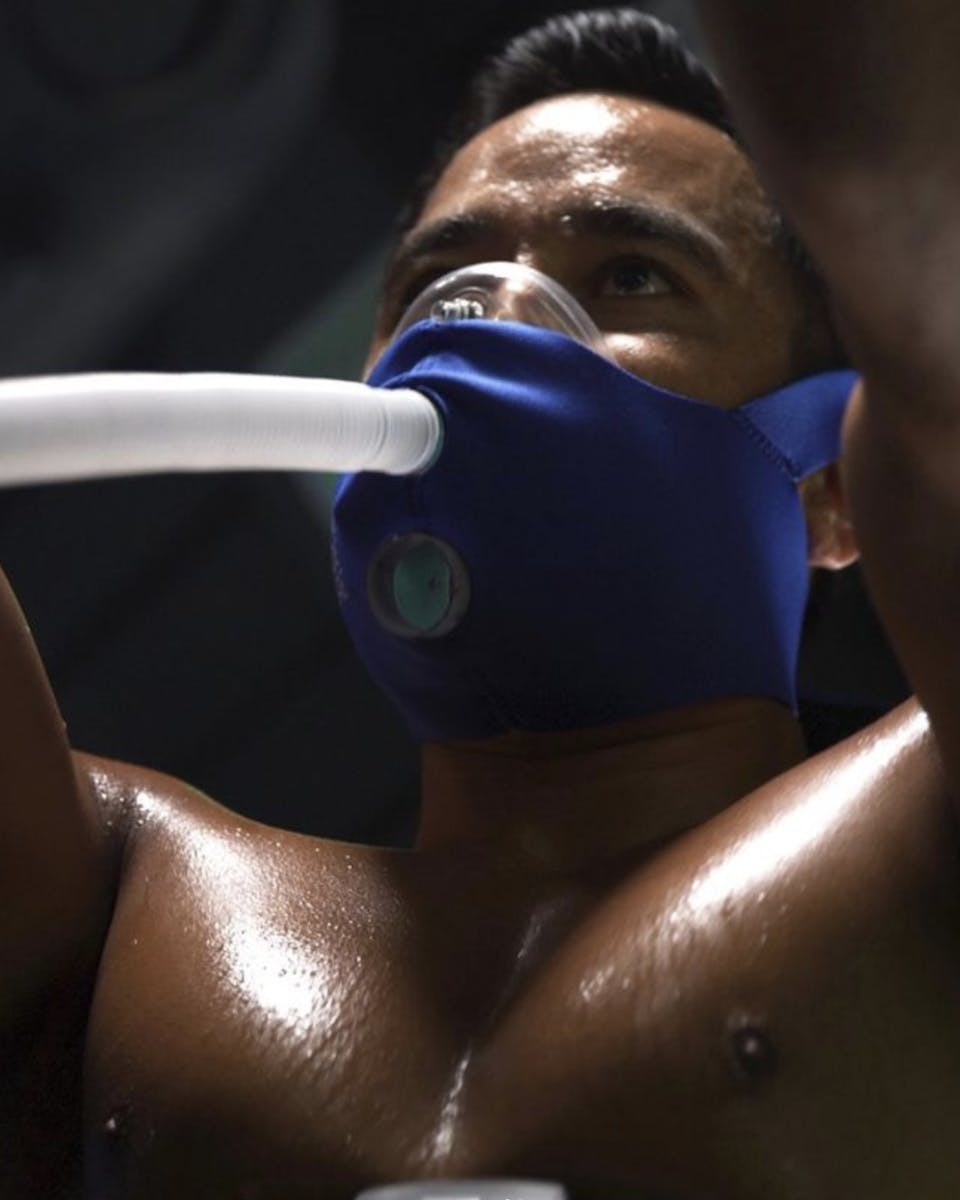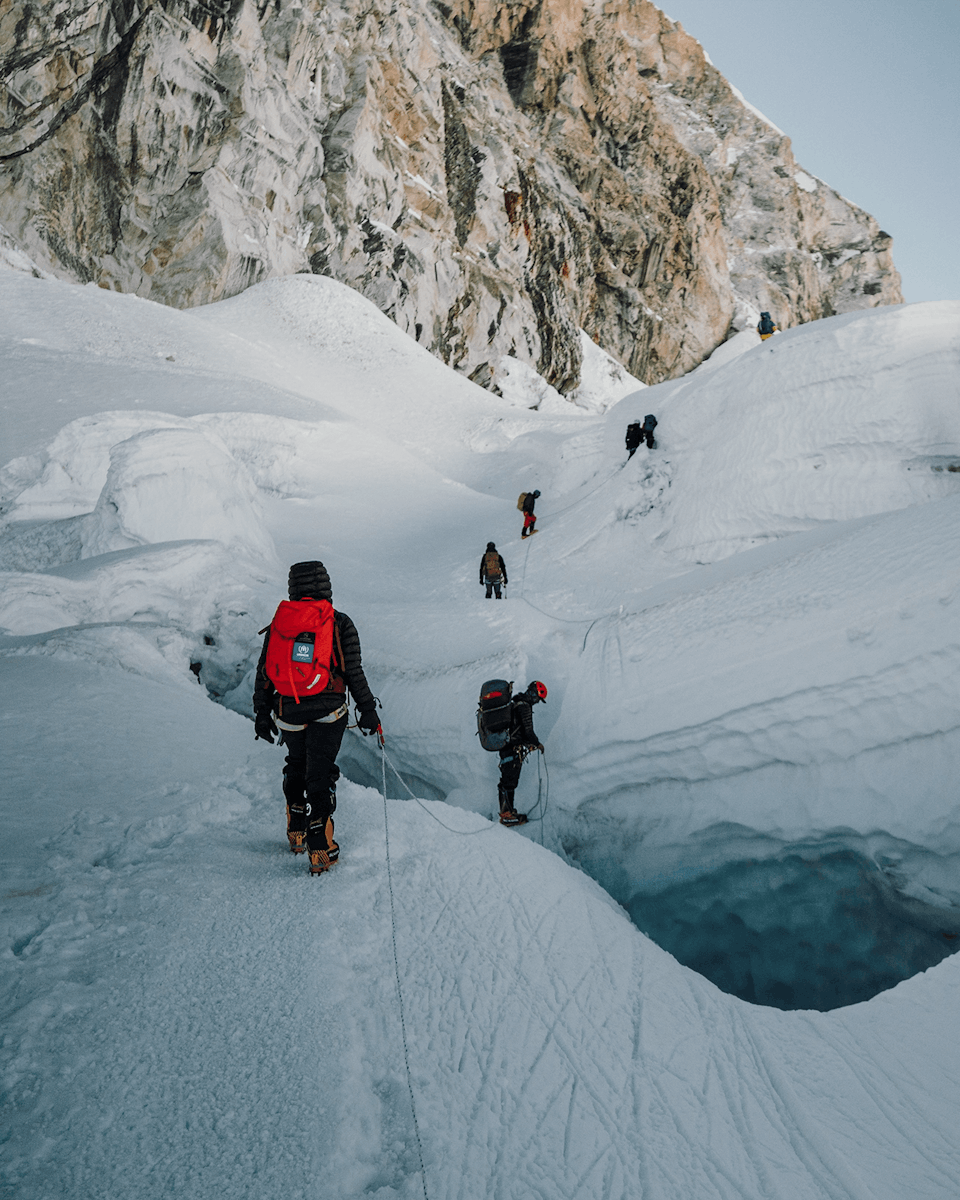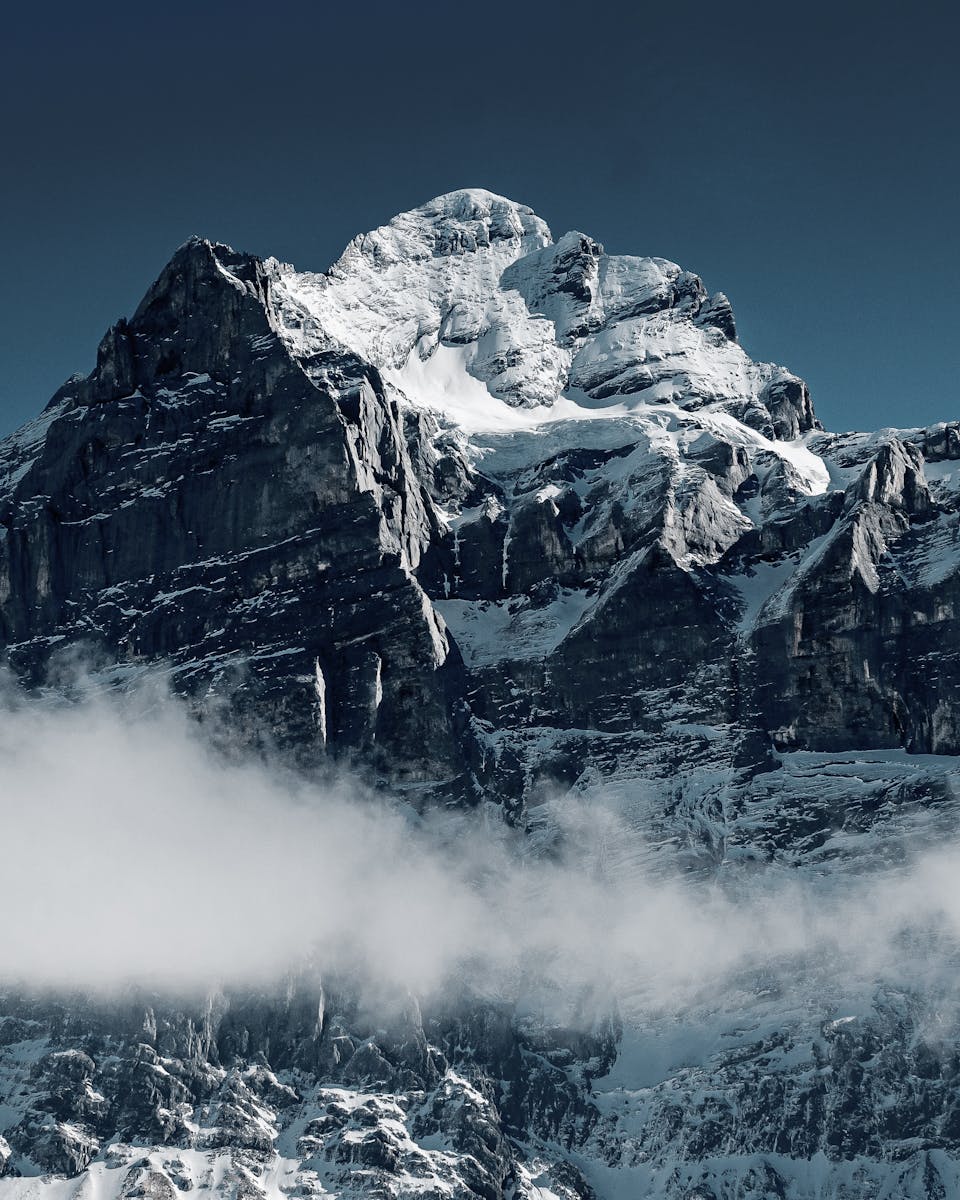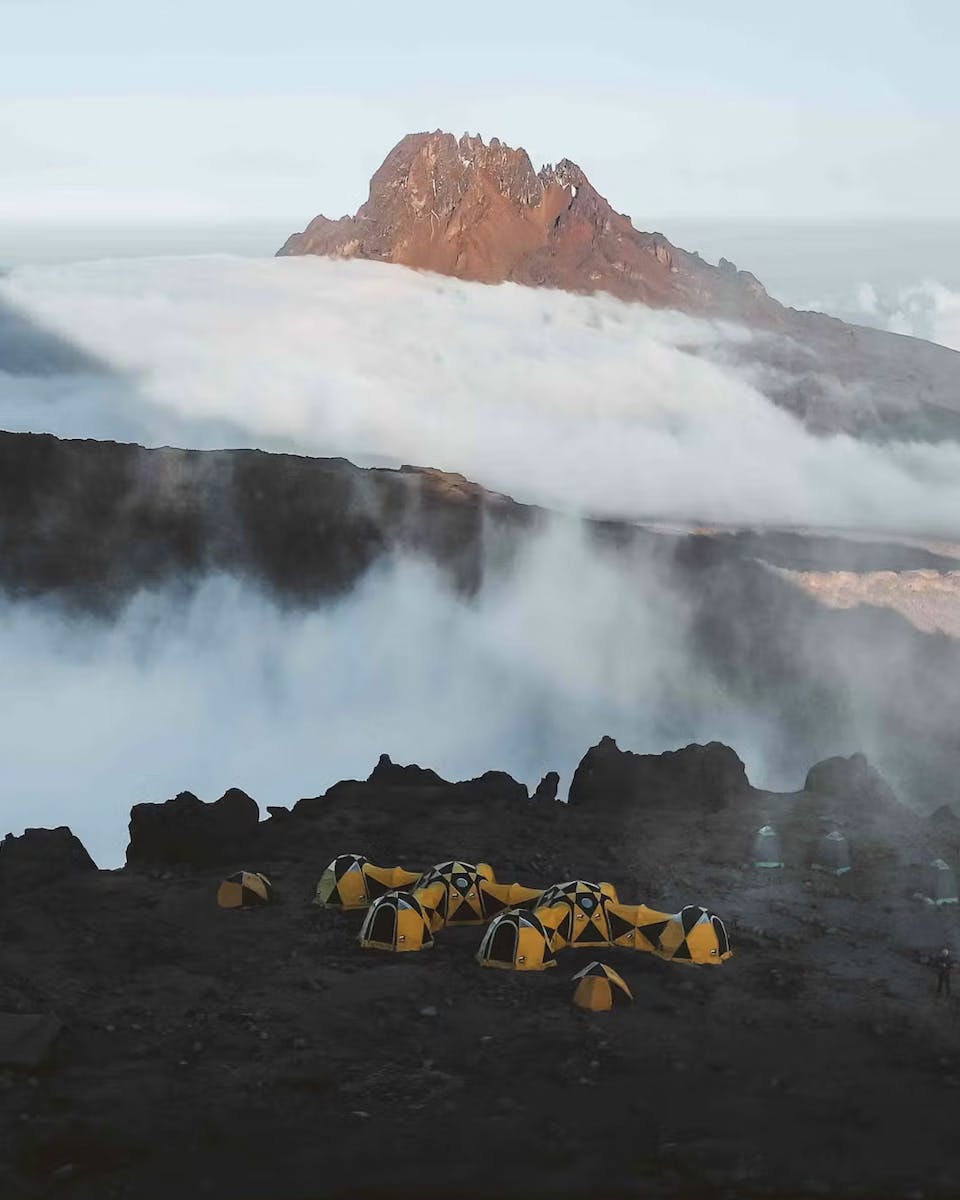K2
K2 is generally considered to be the most difficult among the 8000m peaks due to its many technicalities. This expedition requires climbers with a high level of skill and experience in ice and mountain climbing.
The most popular route is the Abruzzi Spur, or the Southeast Ridge, which begins on the Pakistani side of the mountain. Presented with several technical and exposed sections, as climbers trek towards the summit, they will have to navigate over a 100ft crack also known as “House Chimney” and then almost vertically climb up a steep, rocky and icy section known as the “Black Pyramid”.
Even when the summit is near in sight, there is still another challenge to overcome. Located at 8,200m, lies the infamous Bottleneck, a thin couloir — a narrow gully with a steep incline — on the eastern border. Add to this towering columns of glacial ice known as seracs that precariously overhang the Bottleneck. The combination of the elevation, its steep slope (50-60 degree traverse), and the significant risk of avalanches and falling rocks makes the Bottleneck the most dangerous part of the world’s deadliest mountain.
Everest
While K2 boasts the steeper slopes, Everest presents its own set of challenges. The unforgiving terrain, a chaotic mix of ice, rock, and snow, coupled with constant exposure on steep slopes and hidden crevasses, makes this climb a gruelling test of physical and mental fortitude.
While Everest has more established routes with fixed ropes and ladders, climbers are still faced with a giant hurdle — The Khumbu Icefall. Notorious for being one of the most dangerous parts of the climb, this river of constantly moving ice sits 5,500 to 5,800m above Base Camp. Its reputation stems from more than just the danger it poses, but also the lives it has claimed. That is why climbers need to be well-prepared beforehand to navigate the icefall.
Elite Exped's guides are Khumbu Icefall experts. Their countless crossings have instilled an intimate knowledge of the terrain, allowing them to navigate safely and ensure your well-being throughout the climb.


